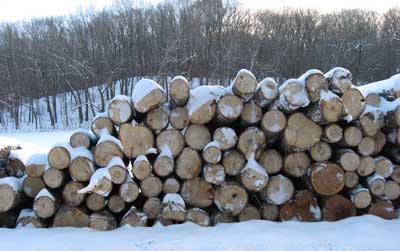
Watch Out For These Harvesting Red Flags
Winter is a popular time to harvest trees because the frozen ground can help protect from damage and erosion and provide easier access. If you are planning to have a harvest this winter, plan to have a lengthy discussion with your forester and logger about the future of the woods aimed at answering two questions: “What will my woods look like?” and “How is it going to get there?” If these questions are not addressed, are dismissed as unimportant, or the answer is that it will “work itself out,” it should be a red flag that the forester or logger is not including critical thinking and forethought as part of the plan. You will do better to work with someone else.
There are also harvesting methods that may be red flags. Harvests that take all of the trees of value out of your woods today do not consider the forest of tomorrow. Be on the lookout for these harvesting red flags.
Harvest Methods
 Diameter limit cutting (selective harvest) – cutting all trees over a certain size or diameter without regard for the impact on stand structure, tree quality, species composition, or tree regeneration leaves you with a completely unpredictable harvest “tomorrow.”
Diameter limit cutting (selective harvest) – cutting all trees over a certain size or diameter without regard for the impact on stand structure, tree quality, species composition, or tree regeneration leaves you with a completely unpredictable harvest “tomorrow.”
Economic clearcutting – every tree of economic value is cut without regard for the site or tree regeneration, leaving you with little to harvest “tomorrow.”
High-grading (selective logging) – is the practice of cutting only the largest, most valuable trees in a stand and leaving low value and poor quality trees. This is not the same as single-tree selection, which evaluates the removal of each tree selected based on its benefits to capture value weighed against the value of taking an adjacent tree or its value to the woods. Single-tree selection is a contemplative process weighing many factors. High-grading looks at the value of a tree only and nothing else.
Not sure if your harvest will utilize proper methods? Contact your County Forester for a free property visit and peace of mind.
